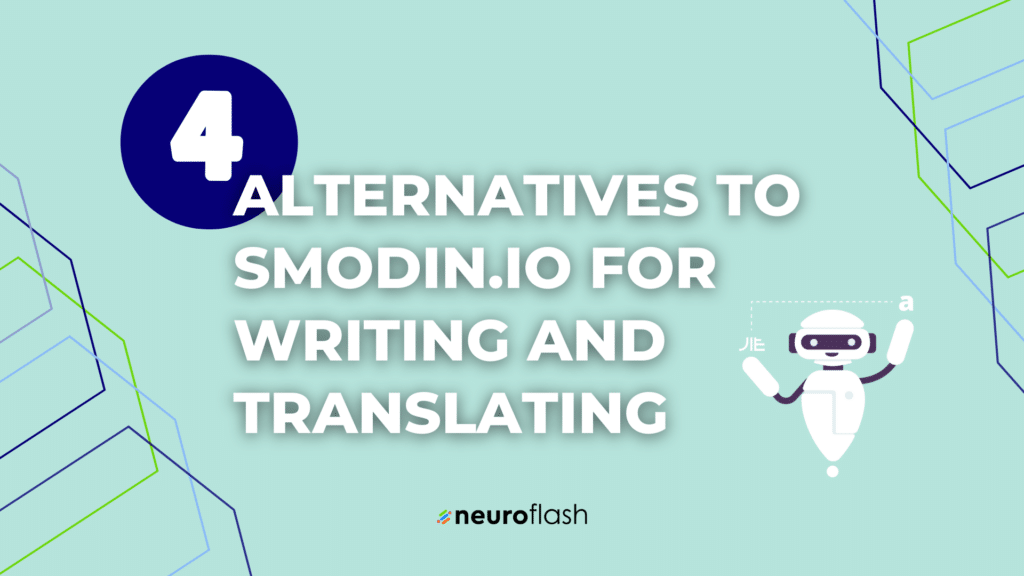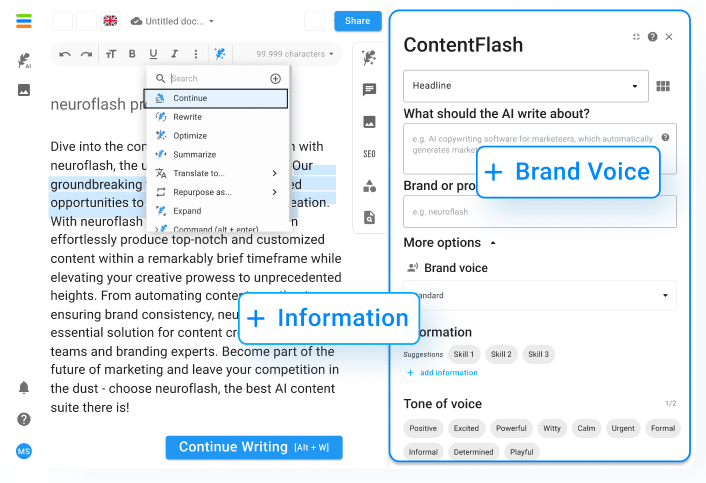You may have heard of cases where students or scientists have gotten in trouble for plagiarism. However, plagiarism does not only appear in scientific papers, but also online. When you write a blog, it’s important that you use only original content. Because nothing is more annoying for your readers than when they find out that you copied something. Therefore, we strongly recommend that you always use a plagiarism scanner in addition to other SEO tools before publishing your blog post – that way you’ll be on the safe side!
What is plagiarism?
Plagiarism is an unauthorized copy or adoption of copyrighted material. Most plagiarism is from the Internet, but other sources such as books, magazines or other written materials can also be affected. The consequences of plagiarism can vary depending on the severity of the offense, which is why it is important to perform an online plagiarism check. There are several types of plagiarism:
- Paraphrasing plagiarism: This is the most common type of plagiarism. The copyrighted material is copied here and is not mixed with new concepts or research results. One merely paraphrases the original idea in one’s own words and the statements of the borrowed material remain the same in the new work.
- Mosaic plagiarism: This type of plagiarism simply paraphrases another person’s work without properly citing it. It is often difficult to detect because the plagiarized material is interwoven with many different sources, including the author’s own ideas and point of view. This type of paraphrasing can be done from one or more sources. The author may try to change the sentence structure or use synonyms to give the impression that it is original. However, taking the idea of another work is still plagiarism, even if the words are changed a little and mixed with original thoughts.
- Direct Plagiarism: Direct plagiarism, also known as verbatim plagiarism, is an intentional and unethical form of content theft. As the name suggests, the text is stolen word by word and inserted into the new post. The author then tries to pass off the content as his own. A word or two may be changed, but this kind of plagiarism is too obvious to be considered paraphrasing.
- Full plagiarism: Full plagiarism is more common in academic papers than in content marketing. This type of plagiarism occurs when someone tries to pass off an entire research paper as their own without properly labeling it.
- Accidental plagiarism: Plagiarism does not always happen intentionally. However, it is still considered plagiarism if someone copies someone else’s writing without acknowledging the source, the source is not cited correctly, or quotation marks are accidentally forgotten. Just because the plagiarism was inadvertent does not mean that there was no plagiarism. That’s why it’s important to check every paper and use a plagiarism scanner if in doubt.
Where can plagiarism become a problem?
Without online plagiarism check, plagiarism can appear not only in various forms, but also in many different fields:
Academic achievements 🎓
Probably the best known area where plagiarism often occurs is academia. This type of plagiarism is a form of cheating in which someone passes off someone else’s academic work or parts of their work as their own. This can be text, code, ideas, or other forms of work. It can be intentional or unintentional.
Sales Marketing💲
Plagiarism in PR and advertising copy, as well as product descriptions, is the use of text and/or ideas that are not attributed to the author. This may result in a lawsuit for copyright infringement.
Advertising campaigns 📺
Plagiarism in advertising campaigns is the use of ideas or content that have already been used by other companies or individuals without clearly identifying them. This can be intentional or unintentional and can lead to serious consequences if discovered.
Content marketing and blogging 🖊️
Plagiarism is a big problem in the blogsphere and in content marketing because it can happen easily and because it’s hard to spot. Many authors try to protect their work by putting a copyright on their blogs. Still, it’s very difficult to trace the origins of a particular article when it’s shared online.
The fact is that plagiarism is a serious problem that can lead to consequences such as:
- Loss of trust in the person, company or brand.
- Loss of credibility.
- Penalties from institutions or individuals from whom the plagiarism is noticed.
- Legal consequences such as fines.
- Violation of good reputation and difficulty in restoring it.
How does a plagiarism scanner work?
If you want to be on the safe side, then you should definitely do a plagiarism check. This can be done, for example, by using a plagiarism scanner. There are many plagiarism scanners online that can help with plagiarism detection. But how do such plagiarism scanners work?
Plagiarism scanners are based on artificial intelligence. They work by sending a text to an online database and comparing it to other texts in the database. If the text matches, plagiarism is detected. In the background, plagiarism scanners crawl numerous indexed online contents from the Internet and perform a keyword analysis to identify matching content. Some plagiarism scanners are even able to detect paraphrased content. For the user, the plagiarism scanner usually gives a plagiarism percentage, highlights the plagiarism and lists the sources.
However, a plagiarism scanner often reaches its limits when it comes to content that has been completely rewritten or translated into another language. Moreover, plagiarism scanners mainly refer to texts and cannot test other media like images, videos, music, etc.
The 6 best plagiarism scanners
There are a number of tools against online plagiarism on the market. Even though most plagiarism scanners work similarly, there are some differences that can affect plagiarism checking. For example, the size of the database used and the quality of the plagiarism check play a role. We have listed 6 tools for you:

Grammarly is one of the most trusted and popular writing tools for copywriters and academics. With its precise plagiarism detection, Grammarly is also an automatic proofreader and plagiarism scanner. The tool has a huge database of 16 billion web pages and can be downloaded for free and used as a browser extension. If the tool detects plagiarism, you get a warning directly in the document. However, to use the full range of Grammarly’s features, you have to pay about $12 (€11.50) a month for a premium subscription. Moreover, Grammarly is intended predominantly for English texts.

Turnitin is mainly a useful tool for academics and is suitable for checking essays and scientific papers for plagiarism. The tool provides a comprehensive scoring system for each scanned document, offering a similarity index, percentage score, and a report that provides further insight into the document. Ultimately, however, Turnitin is not recommended for individual use and is hardly used outside universities.

ProWritingAid helps check manuscripts, novels and other literary works for plagiarized content. This tool is a cheaper alternative to Grammarly. You can have your work checked for plagiarism quickly and easily with ProWritingAid, even if you only have a small budget. Here you can use Copyright Checker to scan texts while editing them in common applications like Scrivener. Or you can simply upload a document. To try the plagiarism checker, you still have to pay an amount up to $70 (about 67€) annually.

Quetext compares various academic sources and websites. You can use the free version for a paper of up to five pages and use it to check the document for plagiarism. It doesn’t have a grammar and spell checker like Grammarly, but the site does have an integrated citation wizard that corrects plagiarism through citations.

Scribbr’s Plagiarism Scanner is a partnership with Turnitin and is one of the highest quality tools out of all the free and paid programs. Compared to other platforms, this tool detects up to 95% of plagiarism compared to the average of 21% for free software programs. Scibbr uses a database of 99.3 billion web pages, 8 million publications and 20 languages. There is a free version of the scanner online, but you have to pay to review longer documents.

CopyScape is one of the oldest free plagiarism scanners, having been on the market since 2003. This tool is especially useful for blog posts and online content. All you have to do is type in the URL of the post or other article on the site, and the hits will be displayed. If the online content is not yet published, you can paste it in the space provided.
Conclusion: the advantages of a plagiarism scanner
Plagiarism scanners are an indispensable tool for scientists as well as copywriters and copywriters. They help protect one’s work from unwanted plagiarism and also have the advantage of making work more efficient.
A plagiarism scanner searches the Internet for text passages that match your own text. This makes it possible to detect and avoid potentially dangerous copies. This is especially important for anyone who publishes their work online to ensure that they have not inadvertently copied from others. Scientists, on the other hand, often use such tools to check other researchers’ work for plagiarism. In addition, a plagiarism scanner can also help you avoid potential copyright infringement. All in all, the use of a plagiarism scanner offers many advantages.
If you’re worried about plagiarism, you might also want to try an AI text generator like neuroflash. You can use neuroflash completely free of charge and create original, plagiarism-free content in different languages and in over 80 text types. Just click here!























